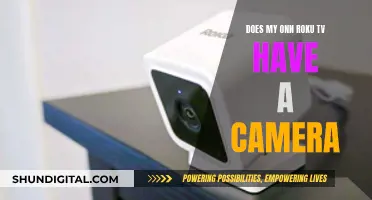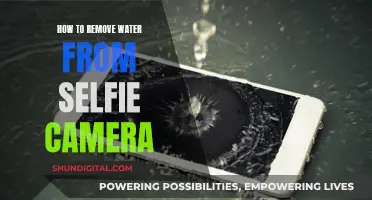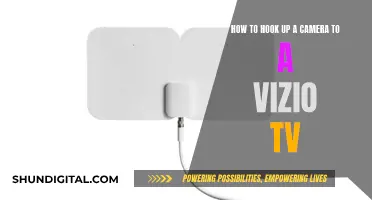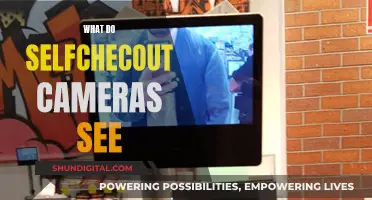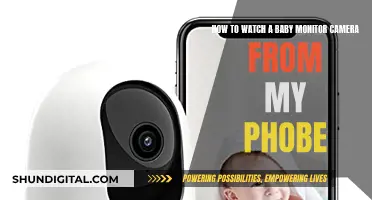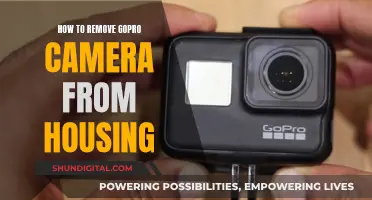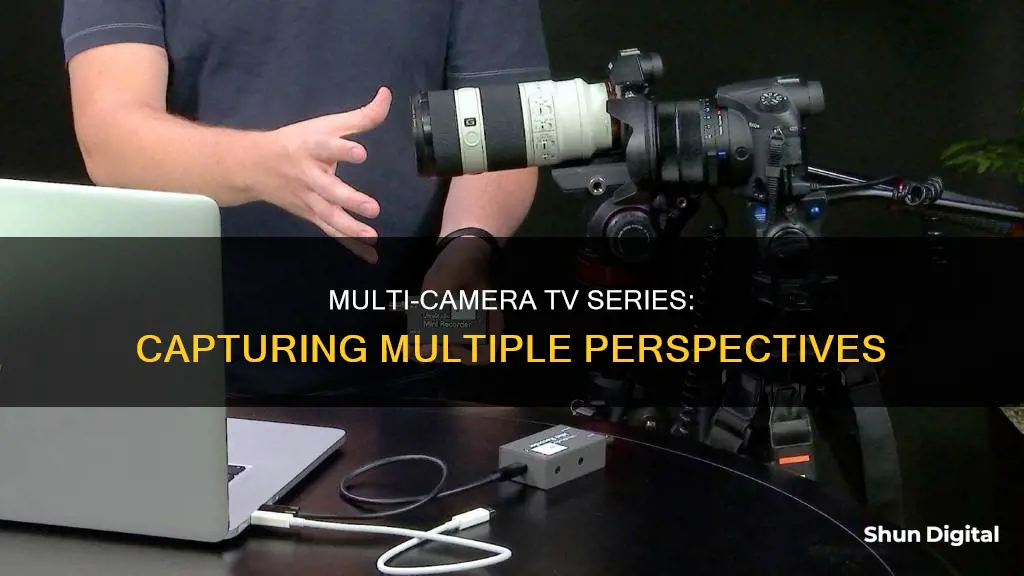
Multi-camera sitcoms are a traditional approach to television comedy, dating back to shows like The Dick Van Dyke Show, The Mary Tyler Moore Show, and Friends. They are filmed in front of a live studio audience, with three or four cameras capturing the action from different angles. This setup allows for faster production, with episodes often shot in just a few hours, and provides a more seamless viewing experience for the audience. The multi-camera approach is commonly used for sitcoms, soap operas, talk shows, game shows, and reality TV series.
| Characteristics | Values |
|---|---|
| Number of cameras | Multiple cameras |
| Camera arrangement | Multiple cameras are arranged to capture all different camera angles of the scene simultaneously |
| Lighting | Lighting setup needs to be a compromise that works for all camera angles |
| Equipment placement | More complicated to set up and place equipment such as microphone booms and lighting rigs |
| Recording capacity | Uses more recording capacity, e.g. a four-camera setup may use up to four times as much film or digital storage space per take |
| Synchronisation | All cameras must be synchronous to assist with editing and avoid different scan rates |
| Editing | Less time spent in editing as there is no need to start and stop the action for different shots |
| Cost | Cheaper to produce than single-camera versions |
| Speed | Much faster to shoot, with some sitcoms shooting more than one episode per day |
| Script length | Scripts are 52-58 pages long |
| Script format | Technical approach to the script format, with all action and scene description in CAPS, character names underlined, character entrances and exits underlined, etc. |
| Live audience | Usually performed in front of a live audience |
What You'll Learn
- Multi-camera sitcoms are often filmed in front of a live studio audience
- Multiple cameras capture the necessary angles to create a seamless viewing experience
- Single-camera sitcoms are more expensive and time-consuming to produce
- Multi-camera sitcoms are cheaper and faster to produce
- Multi-camera sitcoms are similar to live theatre

Multi-camera sitcoms are often filmed in front of a live studio audience
Multi-camera sitcoms are typically filmed in front of a live studio audience, giving them a similar feel to live theatre. This is in contrast to single-camera sitcoms, which are usually shot without an audience, like a film.
The multi-camera setup is often used for sitcoms because it is faster and cheaper to produce than single-camera setups. Multiple cameras are arranged around the set to capture all the different angles of a scene simultaneously, and the set is lit to accommodate all the cameras at once. This means that scenes can be shot much more quickly, as there is no need to reset and relight for each new angle.
The presence of a live studio audience also influences the humour and style of a multi-camera sitcom. The actors can feed off the energy of the crowd, and the audience's laughter is recorded to encourage viewers at home to laugh as well. The multi-camera setup also allows for seamless transitions between shots, as the action is captured chronologically and edited together afterwards. This makes it well-suited to shows with a lot of back-and-forth dialogue, such as those with an ensemble cast.
However, the multi-camera setup does have some drawbacks. The lighting setup, for example, needs to be a compromise that works for all the different camera angles. Additionally, the placement of equipment such as microphone booms and lighting rigs can be more complicated and may not be as optimal as in a single-camera setup.
Some well-known examples of multi-camera sitcoms include "Seinfeld", "Friends", "The Big Bang Theory", and "How I Met Your Mother".
TV Cameras at NFL Games: How Many Are There?
You may want to see also

Multiple cameras capture the necessary angles to create a seamless viewing experience
Multiple-camera setups, also known as multicams, are a method of filmmaking, television production and video production. Multiple cameras are placed on the set and simultaneously record or broadcast a scene. This is in contrast to a single-camera setup, where one camera is used.
The multiple-camera setup is particularly useful for capturing the necessary angles of a scene in a single take without having to start and stop the action. This is more efficient for programmes that will be shown shortly after being shot, as it reduces the time spent in the editing process. It is also a virtual necessity for regular, high-output shows like daily soap operas.
In a multicam setup, the two outer cameras usually shoot close-up shots of the two most active characters, while the central camera or cameras capture a wider master shot to provide an overview of the scene and establish the geography of the room. This way, multiple shots are obtained in one take, without the need to relight the set or change the camera angles. This reduces the complexity of tracking continuity issues that may arise when the scene is reshot from different angles.
The multicam setup is particularly well-suited for television shows with a live audience, such as sitcoms, talk shows, game shows and sports events. It allows for the seamless capture of the action as it unfolds chronologically, providing a viewing experience that feels natural and uninterrupted.
By employing multiple cameras to capture different shots and angles, the multicam setup creates a smooth and immersive viewing experience for the audience. The director can then create a line cut by instructing the technical director to switch between the feeds from the individual cameras, resulting in a dynamic and engaging final product.
Candid Camera: Is the Iconic Show Still on TV?
You may want to see also

Single-camera sitcoms are more expensive and time-consuming to produce
Single-camera sitcoms also tend to have longer scripts, typically 22 to 32 pages, and sometimes up to 35 pages. This is because they require more detailed descriptions of shots, angles, and camera movements, as well as additional locations and scenes. In contrast, multi-camera sitcoms are usually filmed in front of a live studio audience, with scripts that are more technically focused and streamlined for production.
The single-camera approach allows for more cinematic storytelling, with more locations, scenes, and characters, and enables the use of visual effects and complex camera movements. It also allows for more subtle humour, as even the slightest eye roll can be captured in a close-up reaction shot. This style of filming is particularly effective for mockumentary-style shows, where characters speak directly to the camera.
However, the single-camera setup requires more time and resources for lighting and camera setup, as each scene needs to be lit and filmed from multiple angles. This also means that the cast and crew may need to spend more time travelling between locations, and there may be additional costs for renting or building sets.
In contrast, multi-camera sitcoms are faster and cheaper to produce, as they can be filmed more efficiently with multiple cameras capturing different angles simultaneously. This setup also allows for the inclusion of a live audience, which can add energy and a sense of community to the show.
Understanding A-DEP, M, AV, TV, P Camera Modes
You may want to see also

Multi-camera sitcoms are cheaper and faster to produce
Multi-camera sitcoms are faster and cheaper to produce than single-camera shows. This is because multi-camera sitcoms are usually filmed in front of a live studio audience, capturing all the necessary shots in one take. This means that there is no need to reset and relight the set for each new angle, as with a single-camera setup. The multiple-camera setup also reduces the time spent in post-production editing, as there is no need to cut back and forth between different angles.
Single-camera shows, on the other hand, are more time-consuming and give the director more control over each shot. They are shot in a similar way to films, with dedicated crews and location scouts, and sets are built for places that will be returned to often. This type of setup is more common for prime-time dramas, made-for-TV movies, music videos, and commercial advertisements.
In contrast, multi-camera sitcoms are often used for soap operas, talk shows, game shows, reality TV series, and sitcoms. They are similar to live theatre, with stages set up in front of an audience, and the performance is captured on multiple cameras as actors walk from one set to another. This type of setup is particularly suitable for shows with a live audience, as it allows the actors to feed off the energy of the crowd.
Multi-camera sitcoms also have a different script format from single-camera shows. The scripts are more technical, with all action and scene descriptions in CAPS, character entrances and exits underlined, and more stage directions. This results in a longer script, typically around 52-58 pages, compared to 22-32 pages for a single-camera script.
Overall, the multi-camera setup is faster and cheaper to produce, making it a popular choice for sitcoms and other types of television shows.
Accessing Raspberry Pi Cameras on Tablets
You may want to see also

Multi-camera sitcoms are similar to live theatre
Multi-camera sitcoms are often filmed in front of a live studio audience, much like a theatre performance. The actors perform the "play" on a stage set before an audience, with multiple cameras capturing the necessary angles to create a seamless viewing experience for television. This is in contrast to single-camera sitcoms, which are shot more like films, without a live audience.
The setup of a multi-camera sitcom also resembles that of a theatre production. Multiple cameras are arranged to capture all the different camera angles of the scene simultaneously, just as multiple angles and perspectives would be visible to a theatre audience. The lighting setup in a multi-camera production also needs to be a compromise that works for all camera angles, similar to how lighting is designed to be effective from multiple angles in a theatre setting.
In addition, the format of a multi-camera sitcom script is quite different from that of a single-camera script. Multi-camera sitcom scripts have a more technical approach, with all action and scene description in capital letters, character entrances and exits underlined, and more stage directions, much like a play. This is because multi-camera sitcoms are produced much faster, with most sitcoms shooting more than one episode per day, so a more streamlined format is necessary for production.
Overall, while single-camera sitcoms may resemble films in their production and aesthetic, multi-camera sitcoms are more akin to live theatre in their setup, format, and the energy they create with a live audience.
Is Your Smart TV Watching You?
You may want to see also
Frequently asked questions
A multi-camera TV series is a show that is filmed using multiple cameras to capture different shots and angles of a scene simultaneously.
Multi-camera setups are faster and more efficient than single-camera setups as they reduce the time spent on lighting, camera setup, and editing. They are also more suitable for shows with a live audience.
Some popular multi-camera TV series include "Seinfeld", "Friends", "The Big Bang Theory", and "Two and a Half Men".
Multi-camera TV scripts have a more technical format due to the presence of a live audience. They typically have more pages due to the use of ALL CAPS for action and scene description, double-spaced dialogue, and underlined character names and scene headings.
Yes, it is possible to use a combination of both setups. For example, the 2021 series "Kevin Can Fk Himself" blends a multi-camera family sitcom format with a single-camera format for solo scenes.


